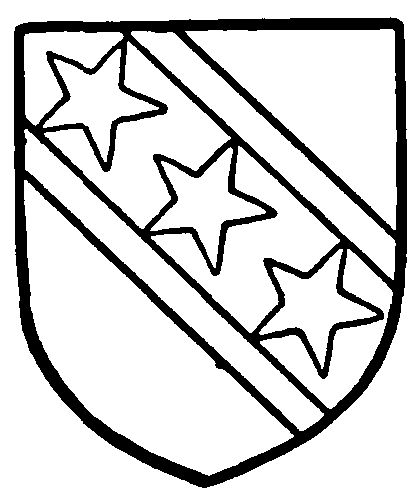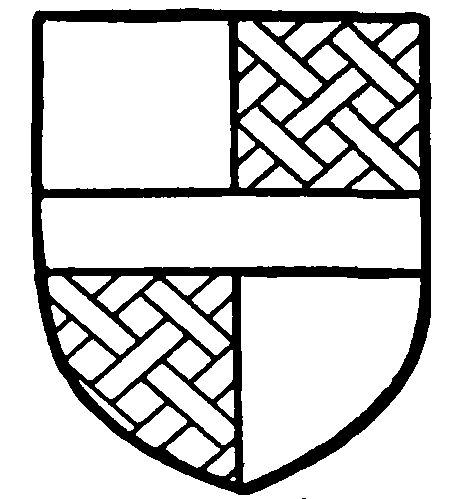A History of the County of Lancaster: Volume 5. Originally published by Victoria County History, London, 1911.
This free content was digitised by double rekeying. All rights reserved.
'Townships: Blackrod', in A History of the County of Lancaster: Volume 5, ed. William Farrer, J Brownbill (London, 1911), British History Online https://prod.british-history.ac.uk/vch/lancs/vol5/pp299-303 [accessed 19 April 2025].
'Townships: Blackrod', in A History of the County of Lancaster: Volume 5. Edited by William Farrer, J Brownbill (London, 1911), British History Online, accessed April 19, 2025, https://prod.british-history.ac.uk/vch/lancs/vol5/pp299-303.
"Townships: Blackrod". A History of the County of Lancaster: Volume 5. Ed. William Farrer, J Brownbill (London, 1911), British History Online. Web. 19 April 2025. https://prod.british-history.ac.uk/vch/lancs/vol5/pp299-303.
In this section
BLACKROD
Blakerode, 1200, and commonly; Blacrode, 1220. The township of Blackrod extends for 3 miles from north-west to south-east. The area is 2,388½ acres. (fn. 1) The highest ground, about 520 ft., is near the centre, where the church and village are situated. The ground slopes away to the north-east and north-west, the lowest ground being in the western corner. The River Douglas and an affluent form the boundaries on three sides; the line of separation from Westhoughton appears to be arbitrary; the Red Moss occupies the eastern corner and divides Lostock from Blackrod. Huyton or Highton lies on the northern boundary, while Arley—famous for its coal (fn. 2) —is the western part of the township. The population in 1901 was 3,875.
The principal road is that through the centre of the township, leading from Bolton to Chorley and Preston. On its way north-west it passes the hamlet of Scot Lane End, the village of Blackrod, and the hamlet of Chauntry Brow. There are cross-roads leading to Horwich and Anderton on one side, and to Aspull, Haigh, and Standish on the other. The London and North-Western and Lancashire and Yorkshire Companies' joint line from Wigan to Adlington passes along the north-west boundary, by which is also the Lancaster and Wigan Canal. The Lancashire and Yorkshire Company's line from Preston to Bolton passes along the north-eastern boundary and has a station at Blackrod, from which a line to Horwich branches off; to the south another branch leads to the Wigan and Manchester line, and has a station on the boundary called Hilton House.
A fair is held on the Thursday after 12 July. In 1804 there were horse races and a cock-fight at the celebration. (fn. 3)
The soil is clayey, overlying clay; wheat and potatoes are grown. Coal-mines have long been worked and form the principal industry. There were formerly bleach - works, and calico-printing works. Bricks are made.
A vaporous sulphur spring existed at Arley. (fn. 4)
A local board was created in 1872, (fn. 5) and it provided for the water supply and drainage of the township. (fn. 6) In 1894 it was transformed into an urban district council of nine members. Gas is supplied by a private company. The cemetery, opened in 1886, is controlled by the district council.
A castle is traditionally said to have stood in the village. (fn. 7) Some ancient dishes and candlesticks were found at Arley in 1803. (fn. 8)
In 1666 there were in all ninety-nine hearths liable to the tax; the two largest houses had five hearths each. (fn. 9)
Manor
The manor of BLACKROD, rated at 1 plough-land, was in the first half of the 12th century in the hands of William Peverel, but escheated to the king in 1153. (fn. 10) About 1190 it was granted by John, then Count of Mortain, to Hugh le Norreys at a thegnage rent of 20s. a year. (fn. 11) On coming to the throne John confirmed his grant in the same terms, (fn. 12) and in 1212 Hugh, called 'de Blackrod,' was returned as tenant. (fn. 13) About 1217, William, Earl Ferrers, was placed in possession, (fn. 14) but in 1221 the title of Hugh le Norreys was acknowledged. (fn. 15) Hugh died soon afterwards, and in 1223 Hugh, his son and heir, became lord of Blackrod, (fn. 16) and appears in 1226 as paying the 20s. rent. (fn. 17)

Bradshagh. Argent three mullets between two bendlets sable.
From Hugh the manors of Blackrod and Haigh appear to have descended to his brother Alan, who in turn was succeeded by his son Hugh. A number of suits between different members of the family establish the succession, and show that Robert de Holland was also concerned in the manor. (fn. 18) The younger Hugh left a daughter Mabel as his heir, (fn. 19) and she, having no children, diverted the succession to her husband's family. Thus Blackrod came into the possession of Roger de Bradshagh of Westleigh, (fn. 20) and descended with the latter manor (fn. 21) till the division of the Harrington estates at the beginning of the 16th century. (fn. 22) Of Blackrod one portion was granted to Henry Norris of Speke, who appears to have been the heir male of the family, and rejoiced greatly to recover a part of the inheritance; another part, with the advowson of the chapel, to Richard Hoghton; and a third share to Sir William Stanley of Hooton. (fn. 23) The Norrises in creased their estate in the township, (fn. 24) and their 'manor' is named in the 17th century. (fn. 25) By this time, however, the land had become much divided; no further notice of a manor appears in the records, though the Earl of Crawford and Balcarres is called the lord as heir of the Bradshaghs of Haigh, who in turn inherited from the Hoghtons. (fn. 26)

Norris. Quarterly argent and gules, in the second and third quarters a fret or, over all a fesse azure.
In the 16th century the principal resident family was that of Hyton or Huyton, whose house was called The Hall. They appear to have inherited from a branch of the Norris family, (fn. 27) and their estate was acquired by Edward Norris of Speke in 1582. (fn. 28)
ARLEY was another ancient estate, held in 1393 by William le Walsh. (fn. 29) He was followed by a Standish family. (fn. 30) In later times a junior branch of the Norrises of Speke were settled in the township. (fn. 31) Other owners also occur. (fn. 32)
George Janion of Blackrod forfeited Park Hall in the time of the Commonwealth. (fn. 33) James Barker and other 'delinquents' are named. (fn. 34) Some 'papists' registered estates in 1717. (fn. 35)
The Hospitallers had land in Blackrod in 1292, (fn. 36) and about 1540 Lord Mounteagle was in possession. (fn. 37)
Lawrence Vaux, warden of Manchester in 1559, was a native of Blackrod. (fn. 38)
Robert Leigh and Sir Richard Clayton were the chief contributors to the Land Tax in 1799. (fn. 39)
Church
Dame Mabel de Bradshagh in 1338 gave an endowment for a chantry priest in the chapel of ST. CATHERINE, then newly-built. The chaplain was to say divine service daily, making special mention of the founder at mass. The lord of Blackrod was to have the nomination. (fn. 40) The names of several of the cantarists are known. (fn. 41) At the suppression in 1548 the foundation was ascribed to James Harrington, and the priest, Ralph Forster, was stated to be celebrating according to his duty; his income, derived from lands in Blackrod, was £4 13s. 6d. (fn. 42) The chapel perhaps remained in use after the loss of its endowment, for the inventory of 1552 shows that it was fully, though coarsely, furnished. (fn. 43) Its fate after the accession of Elizabeth is unknown, (fn. 44) but £4 appears to have been allowed by the duchy to the minister, representing the chantry endowment. (fn. 45) By 1706 the stipend had increased to £21. (fn. 46) Sixty years later the building was enlarged, and galleries have been added since. (fn. 47) A separate ecclesiastical district was assigned in 1858. (fn. 48) The income is now stated to be, £718, and the vicar of Bolton presents the incumbents, who are styled vicars. (fn. 49) The following is a list of them:—
| oc. 1604 | Robert Haslam (fn. 50) |
| oc. 1619 | Richard Barker (fn. 51) |
| 1646 | Gerard Brown, B.A. (fn. 52) (Brasenose College, Oxford) |
| 1654 | Thomas Isherwood (fn. 53) |
| 1668 | —Bolton (fn. 54) |
| 1682 | Hiel (?) Edmondson (fn. 55) |
| oc. 1696 | — Stones |
| c. 1701 | Christopher Tyrer, B.A. (fn. 56) (University College, Oxford) |
| — | Peter Shaw |
| 1722 | Nathan Pierpoint |
| 1727 | James Bankes, B.A. (fn. 57) |
| 1774 | Thomas Shaw |
| 1777 | Joseph Bowes, B.A. (St. John's College, Cambridge) |
| 1788 | Stephen Ellis |
| 1800 | William Marsden, B.D. (fn. 58) (Brasenose College, Oxford) |
| 1837 | Charles Johnson Snape, B.A. (fn. 59) (Queens' College, Cambridge) |
| 1846 | Peter Walsh Browne, M.A. |
| 1861 | Francis Richard Swallow |
| 1877 | Ralph Calvert Williams Croft, B.A. (fn. 60) (Trinity College, Dublin) |
| 1900 | George Worsley Coleman, M.A. (fn. 61) (Jesus College, Cambridge) |
A grammar school was founded in 1568 by the trustees of John Holme, and is now joined with the slightly earlier one founded at Rivington. (fn. 62)
There is a Wesleyan Methodist chapel.
Formerly there was a meeting of the Society of Friends in Blackrod. (fn. 63)